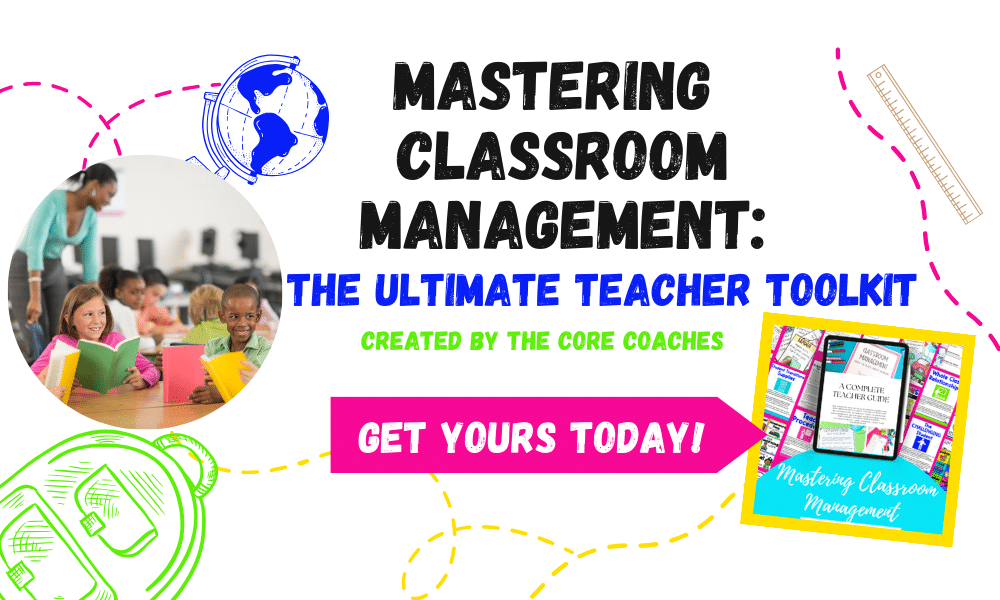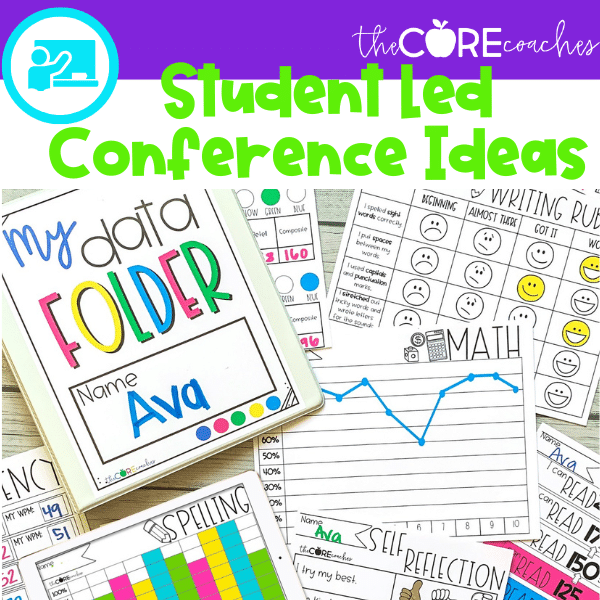When you were preparing to become a teacher, you were probably asked to create a classroom management plan. What did you include in that? Most likely, you began with a focus on class rules, consequences, and rewards (or incentives).
Rules, consequences, and rewards are all part of a classroom management plan. There is a reason we were all taught this! However, after years of being in the classroom, The Core Coaches found that these three things are the least important parts of an effective classroom management plan.
More than a set of rules, effective classroom management is about the structures you have in place on a daily basis, that allow you to do your best teaching.Therefore, when creating your classroom management plan you want to consider how your classroom is structured for learning. This means both the physical classroom, as well as the manner in which your students interact with you and one another.
Below are the 5 most important things you want to consider when creating a classroom management plan.
Want An Effective Classroom Management Plan? These 5 Things Are Must-Haves!
1.Building A Positive Classroom Community
One of the best places to begin a classroom management plan is with your back to school planning. Think about one of the main things you plan for in the fall – “Getting to know You” activities! Guess what? All of those activities you use to get to know your students each year are part of your classroom management plan! Why? Because they help to build a classroom community.
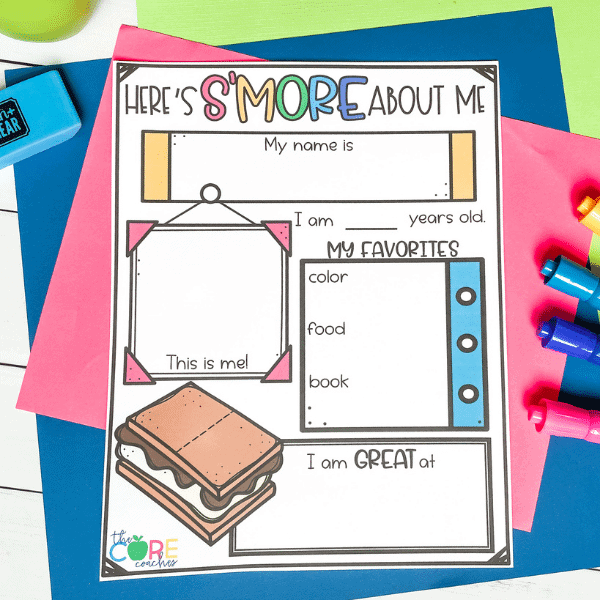
Creating a positive classroom environment is essential to effective classroom management. When students feel like they are important members of the class, they are more likely to engage. When students are engaged, they are less likely to cause disruptions. Less disruptive behavior = more time for teaching!
When creating your plan, begin with ways that you can create positive relationships with your students. This should include daily practices that help build relationships between you and your students, and between all of your students.
2.Routines & Procedures
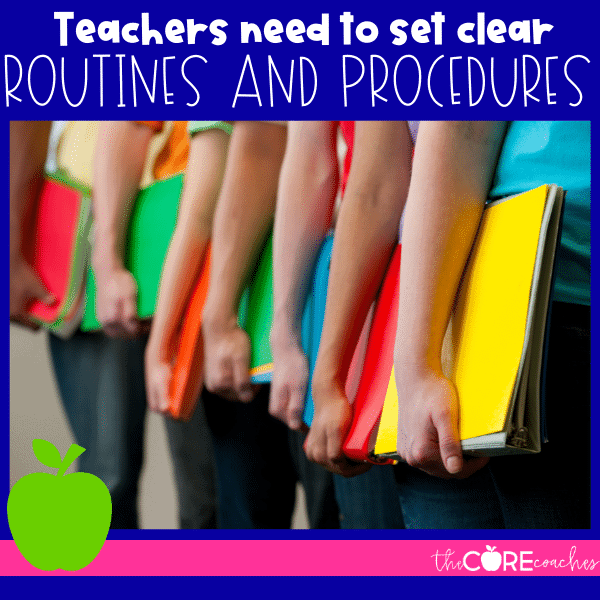
Effective classroom management comes from having clear expectations. With clear expectations, students know what YOU expect. YOU are the captain of YOUR classroom! So, even if a student had to line up for lunch in their previous class, they haven’t had to do it in YOUR class. Therefore, it’s imperative that you create routines & procedures that reflect your expectations for your classroom.
When creating routines & procedures view it through the lens of classroom management. Think about how a particular routine or procedure will help things move quickly and efficiently in the room. The more familiar students are with moving through daily tasks, like getting seated for reading, the less likely they are to get distracted and cause distractions.
Think about your current routines & procedures. Which ones are working? Which ones are not working? Where are areas of your classroom where you need to implement routines or procedures? Take some time to reflect on these questions. Use your answers as a guide when creating your overall management plan.
3.Classroom Preparation & Setup
Two things to consider with classroom preparation are your physical environment and your lesson plans.These are the two areas that the more prepared you are, the more efficient your class will run.
Structure is Key When Creating an Effective Classroom Management Plan
When you set up your classroom, consider how students move from one area to the next. Do you have set expectations of how to move throughout the classroom? Is there a way to manage these movements? Go back to your routines and procedures. Consider how creating a step-by-step routine could help establish a more effective traffic pattern, to help minimize disruptions.
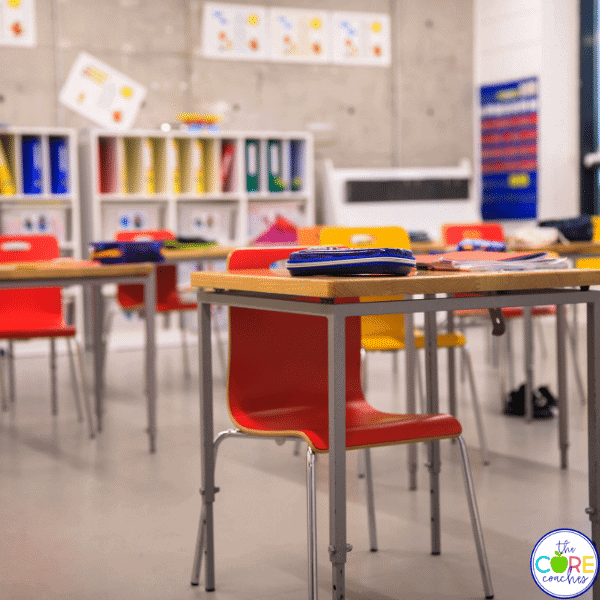
Lesson planning is truly one of the most important parts of classroom management. Not necessarily WHAT is being taught in the lesson, but HOW it is being taught. Look at your lesson plans through the classroom management lens. How engaged are your students during instruction? What engagement strategies are working? What subjects or lessons do you tend to lose their attention? Reflect on these questions. Then, add “engagement strategies” as part of your future lesson planning.
4. Student Accountability
Classroom management isn’t just about you managing the classroom. It is also about how your students manage the classroom! When creating your classroom management plan, think of ways you can give your students accountability.
An easy way to create student accountability is to give students jobs in the classroom. This could be as easy as assigning a student to greet everyone at the door each day; rotating students each day. Another important aspect of accountability is having students reflect on their participation and behavior in class. Consider including a reflection sheet as part of your end of day routine.
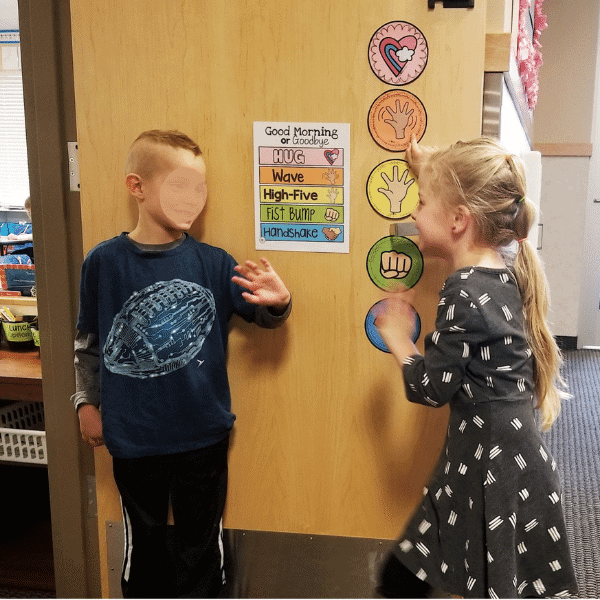
Student ownership is also an important part of accountability. Give your students a stake in their learning environment! The more students feel like the classroom is THEIR space, the more likely they are to engage with it in a positive way. This can be as simple as having students help create the physical space by having a piece of work hanging in the room.
5.Behavior management system
While we don’t believe rules are the most important part of effective classroom management, there is a place for them. Just as there is a place for clear consequences and rewards.
Not every student is going to be able to manage their own behavior through positive relationships & routines. There may even be a year when you end up with an entire class that needs a bit more explicit motivation (trust us, it happens). Theforeore, it is always important to have a strong behavior management system in place.
A behavior management system includes a clear set of classroom rules, along with the incentives and consequences. Try to focus on positive behavior interventions, over consequences to motivate students. However, establish clear consequences for when incentives do not work. A good rule of thumb is to have 3-5 clear classroom rules, and then 3-5 incentives AND 3-5 consequences.
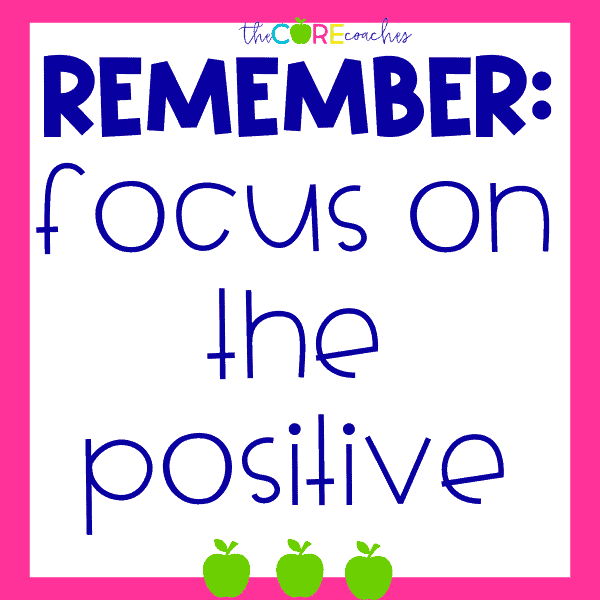
In the end, effective classroom management is truly about the structures you have in place every single day you teach. So when you go to create a classroom management plan, you really already know what to do! The biggest change is simply viewing EVERYTHING you do through the lens of classroom management, rather than just one separate system.


